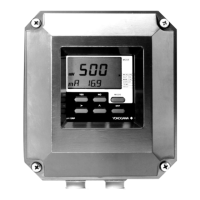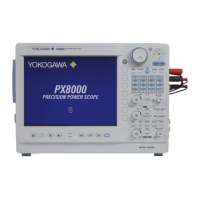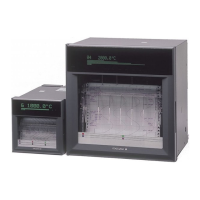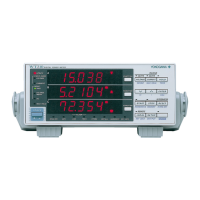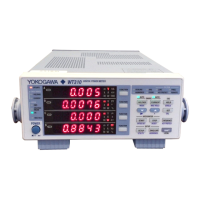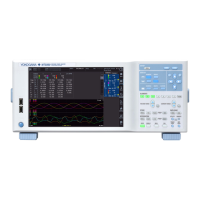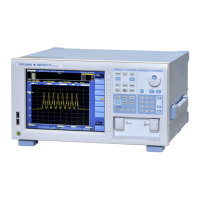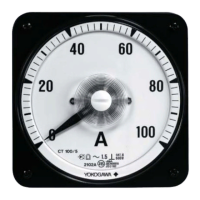<5. Inspection and Maintenance>
5-2
IM 12B07W01-04EN 1st Edition : Nov 11, 2016-00
5.1.3 Replacement of Fuses in the Power Supply Box
This procedure applies only when your system is a pH/ORP Converter. The power supply box of
the operating unit contains a fuse (1 A rating) for the power supply circuit of the pH converter. No
pH measurement is possible if this fuse blows. It is, therefore, recommended that you replace the
fuse once every two years even if you do not observe any anomaly with it.
Note: The PH450G pH/converter also contains a 0.1 A fuse. Refer to the maintenance parts list
of PH450G.
5.2 Inspection and Maintenance of PH8HS3
Holder
5.2.1 Removing Foreign Matter from Wetted Part of Sensor
Holder
Chemical cleaning can remove only such dirt that is on the pH sensor unit. If the sensor holder
itself is also wetted with the measured solution, manually remove dirt if the dirt cannot be cleared
by chemical cleaning function. An excessive amount of dirt on the holder may lead to anomaly
of performance because the cleaning chamber or pneumatic cylinder are affected by their
contamination which is made while the sensor holder is rising.
5.2.2 Inspecting Gasket on the Bottom Plate of Cleaning
Chamber
Put the PH8HS3 holder into the WASH mode (turn on the MANUAL WASH switch in the control
box) to inspect the gasket for leaks. If there is any leaking of chemical solution, the following are
the possible major causes:
• The sealing surface of the gasket is dirty.
• The gasket is slightly out of shape, resulting in its failure to maintain a proper seal with an
even force.
• The gasket is damaged due to deterioration of the material.
If solution is leaking from the seal because of a deteriorated gasket, replace the gasket. If an
unevenness in the pressure applied to the seal is responsible for leakage (or if the gasket has
been replaced), follow the procedure below to adjust the height of the stopper.
Make this adjustment with the system set in the cleaning mode.
(1) Loosen the locknut on the stopper.
(2) Adjust the height of the stopper so the solution stops leaking from the seal. (Adjust the
stopper to a height which ensures that the sealing surface of the gasket is level with the
bottom surface of the cleaning chamber and the entire sealing surface comes into contact
with the bottom of the chamber with an even pressure.) If the chamber is empty, ll it with
approximately 100 ml of water to make this adjustment.
If the solution leaks signicantly even after you have adjusted the height of the stopper,
adjust (increase) the force of the spring that produces the pressure around the gasket.
a. Loosen the spring locknut above the spring (turn the locknut counter clockwise).
b. Turn the Spring-adjustment nut clockwise until the solution stops leaking.
Note: The typical force of the spring is 45 N {4.5 kgf} (where the spring contracts approximately
10 mm). If the solution does not stop leaking even when a pressure close to this value is
applied, there may be another cause of the leak.

